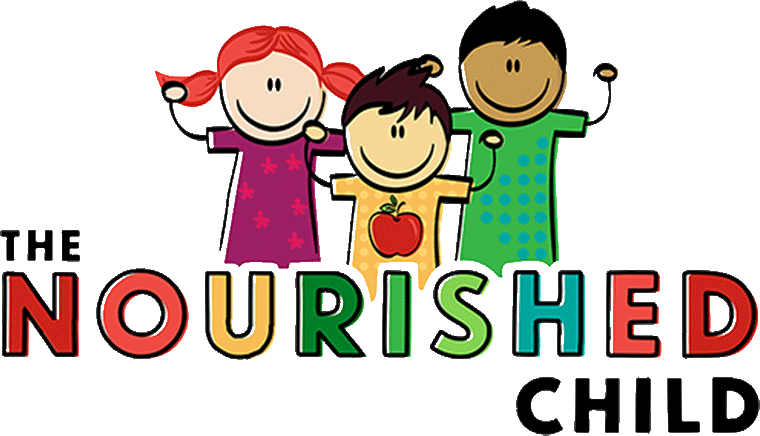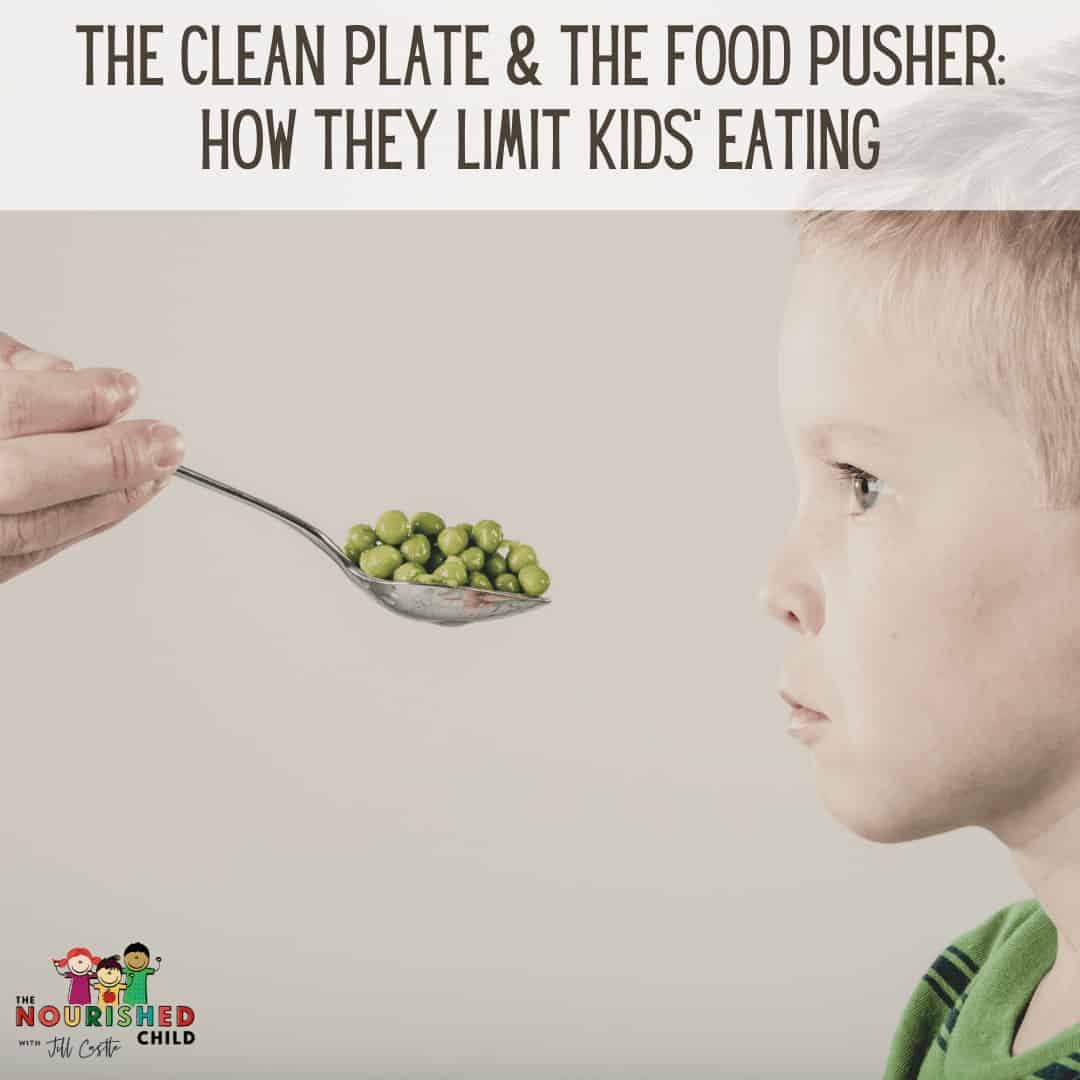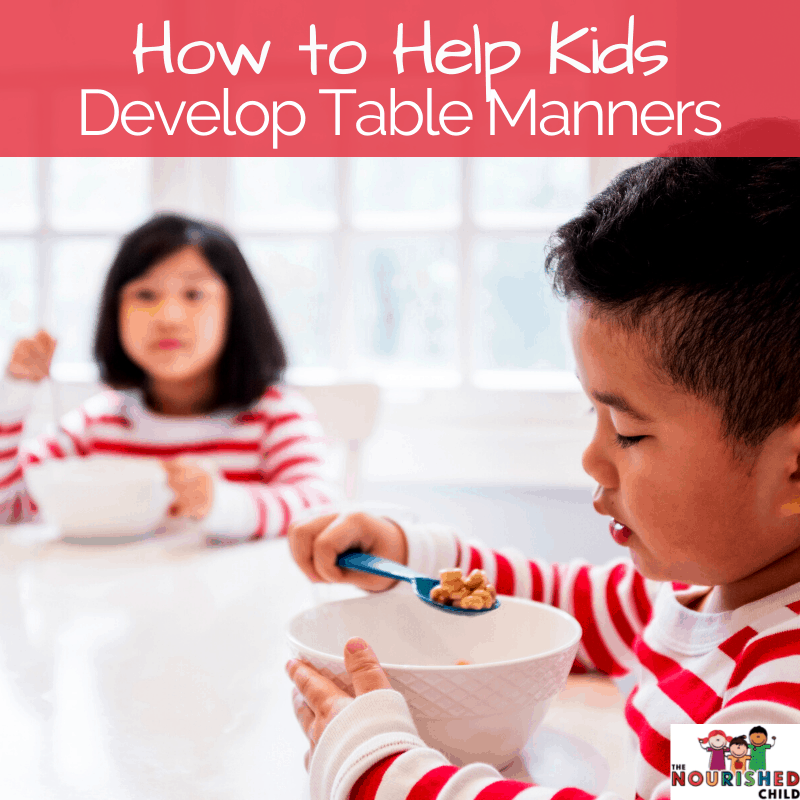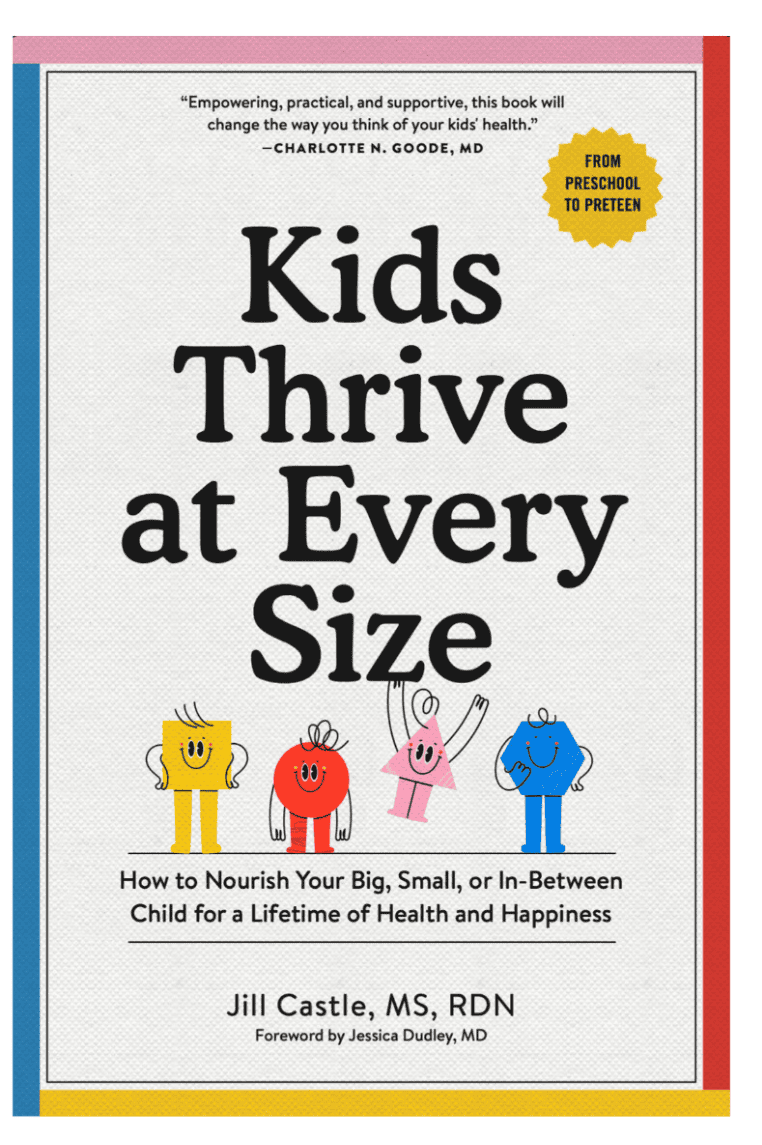Sweets for Babies? What Parents Should Know About Sugar
September 13, 2022
When can babies have sugar? Today’s babies are eating more sugary foods than ever before. Is it okay to give your baby cookies, cake and candy?
In this article, you’ll learn when you can give sweets, the potential health outcomes, and how sweet foods shape food preferences early in life.
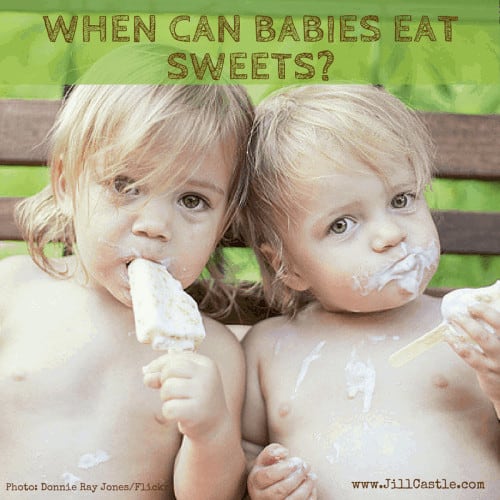
When Can Babies Eat Sugar?
I get the question about giving sweets to babies and young toddlers occasionally, but not often enough.
As the world becomes more focused on infants and the nutrition they need to grow well and develop a healthy brain, you might be wondering where sweet treats fit into the mix.
The latest recommendations from the American Heart Association (AHA) say babies and young toddlers should not receive any sweets in the first 2 years of life.
And recently, the new 2020 Dietary Guidelines for Americans (DGA) stands strong in its advice to nix added sugar for babies and young toddlers in the first 24 months of life.
Not only is the introduction of sugary foods tied to later health problems in children, they also shape food preferences and choices.
I have agreed with this stance about sweets for baby for a long time, but I’m of a practical mindset, too. I’m not suggesting you skip the birthday cake.
If your young child has eaten (or will eat) sweets, I don’t want you to feel terribly guilty, either.
I do, however, want you to know what’s at stake when babies eat sweets on a regular basis.
Infants and Young Toddlers: Trends in Sugar Consumption
As it stands, babies and young toddlers are receiving cookies and other sweets earlier than age two. In fact, far too many of them.
Statistics from the most recent Feeding Infants and Toddlers Study (2018) capture what’s going on in this area of nutrition for babies and young toddlers. They found:
- About 30% of 1-year-olds and 45% of 2- to 3-year olds drink sugar-sweetened beverages on a given day, with fruit-flavored drinks being the most popular.
- Twenty-seven percent of children between 1 and 3 years do not eat a single serving of vegetables on a given day.
- About 75 percent of 2- to 3-year-olds exceed the upper limit for sodium.
- More than 60 percent of 2- to 3-year-olds exceed saturated fat guidelines.
- Three quarters of children between ages 1 and 2 years eat sweets everyday and 90% of 2 -to 3- year olds do.
While I don’t have a research study or stats to back this up, I am pretty sure more babies and toddlers are slurping coffee drinks from their parents today than ever before.
Between 18 and 20 months of age, the young toddler’s diet looks similar to the adult diet. In other words, quite similar to the foods their parent’s eat.
This has been associated with a higher likelihood of problematic body fat gain later on in childhood.
It’s easy to see that if we want to turn the tide on unhealthy eating and encourage healthy habits, we need to get a handle on baby’s diet. We need to help them get started on a healthy track with nutritious foods the focus.
After all, babies and toddlers aren’t selecting these foods themselves!
They eat what they are given.
Why Sweet Snacks and Sugary Treats Aren’t Good for Baby
There are several reasons why sweets and sugar are things you should avoid or significantly minimize in the first two years of life. Here are my top 4 reasons:
1. Sweet Foods Contain Little to No Nutrients
Foods such as cookies, candy, and sugary cereals, and sweet drinks like juice and soda, have a lot of added sugar content, which isn’t a nutrient young children need.
Most concerning is the sacrifice of important nutrients like calcium and vitamin D, and DHA. Not to mention the short-shrift fresh fruit and vegetables, and other healthy foods get when sugary foods are included in the diet of babies and toddlers.
Given that nutrients are in high demand in the first 2 years of life, filling those little stomachs with sugar does nothing to help nourish your young one’s body or brain.
2. Sugary Treats are High in Calories
Often, sugary foods are also high in calories. Diets high in calories may ‘overfeed’ the older children, and may be associated with extra body fat.
This holds true for very young children, as well.
The rate of extra body fat sits at 8% in children under 2 years of age, according to the CDC, and highlights the role of food choice as an influencer in this age group.
Of course, beyond age two, a balanced diet can include sweet treats. It’s all in the balance. How infants and young toddlers are fed is a factor as well.
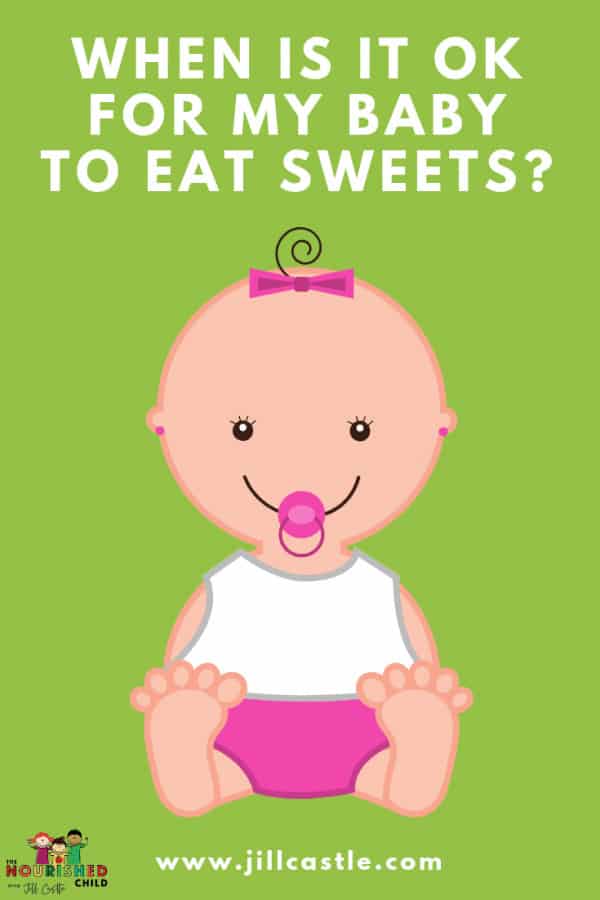
3. Eating Sweet Foods Strengthens Sugary Food Preferences
Sweet food begets sweet food. Infants are born with an established preference for sweet flavors (amniotic fluid is sweet and so is breast milk) and a dislike for bitter foods like vegetables.
The foods that babies eat outside the womb, particularly if they are high in sugar and fat, may reinforce this preference for sweet foods.
[Listen in to my interview with Dr. Julie Mennela about children’s preferences in food.]
During the first 5 years of life when children are establishing their food preferences, frequent exposure to sweetened food or beverages may further encourage a preference for these foods.
4. Sweets Increase the Risk for Cavities
Tooth decay can happen when your child’s teeth come in contact with too much sugar. It can even happen before your child has teeth.
Why? Sugar helps bacteria grow and this causes the teeth to decay.
Many of the liquids that young children drink contain natural sugars, including milk and other dairy products, formula, and fruit juices.
Eating snacks with sugar also places more sugar on your child’s teeth, increasing the likelihood of decay.
Make sure you brush your child’s teeth every day to lower the risk of tooth decay.
My Advice About Sweets for Babies
Parents of young children should dial back sweets when possible. I know it’s not easy!
If you can delay the introduction of cake, cookies, candy and sugary beverages, that is ideal. Remember, the world will expose your baby (and child) to many sweet options, some of which you’ll have no control over.
While your child is young, you do have more control over sugary foods.
But our food world is full of opportunities for all kids to eat sweets—find out how you can manage the sugar in your child’s diet throughout his or her childhood.
When Can Babies Have Cookies?
For traditional cookies we bake in the oven, the ones full of chocolate chips and sugar, babies can look forward to eating them after they turn two.
Other baby cookies and baby snacks like arrowroot cookies have been around since my kids were babies! They’re fine.
Candy for Baby
There are many types of candy out there for all of our children. But, for babies, candy shows up as lollipops for the most part.
Is a lollipop good for babies? I wouldn’t call them “good for babies” as they are all sugar. My advice would be to avoid them as much as you can until your little one turns two.
And then, I’d use them sparingly, and definitely not as a food reward for good behavior or eating.
Also, remember, many candies are choking hazards for babies and young toddlers and should be avoided.
So What Sweets are Suitable for a 1 Year Old?
Nature’s original sweet treat, of course!
Fresh fruit. (Or canned in their own juices, dried, or frozen.)
Fruit is naturally sweet and packed with lots of nutrients and fiber for your little one. Serve sweet fruit with all meals and you’ll curb that sweet tooth from the start. Avoid fruit drinks.
Can Babies Have Chocolate?
The AAP advice avoiding chocolate until your child is two years old. It not only contains added sugar, but it’s also a source of caffeine.
When Can Babies Have Ice Cream?
It’s advised that you avoid ice cream until your baby is two years old. This falls in line with the general advice of no added sugar before age 2.
However, there’s another caution with ice cream and that is food allergies.
Since ice cream is a dairy product and may contain nuts or peanuts and other allergens – or be cross-contaminated by them — it’s best to wait on ice cream.
At What Age Can a Baby Eat Cake?
Truth be told, each of my four children had cake on their first birthday. It was a special occasion.
We didn’t know then what we know now. Our food landscape and children’s health problems have escalated since the ’90’s and 2000’s when my kids were babes.
That being said, I think if cake is offered on the first birthday and it doesn’t become a regular habit, that’s just fine.
However, I’d wait before including cake as a regular part of your young child’s eating pattern.
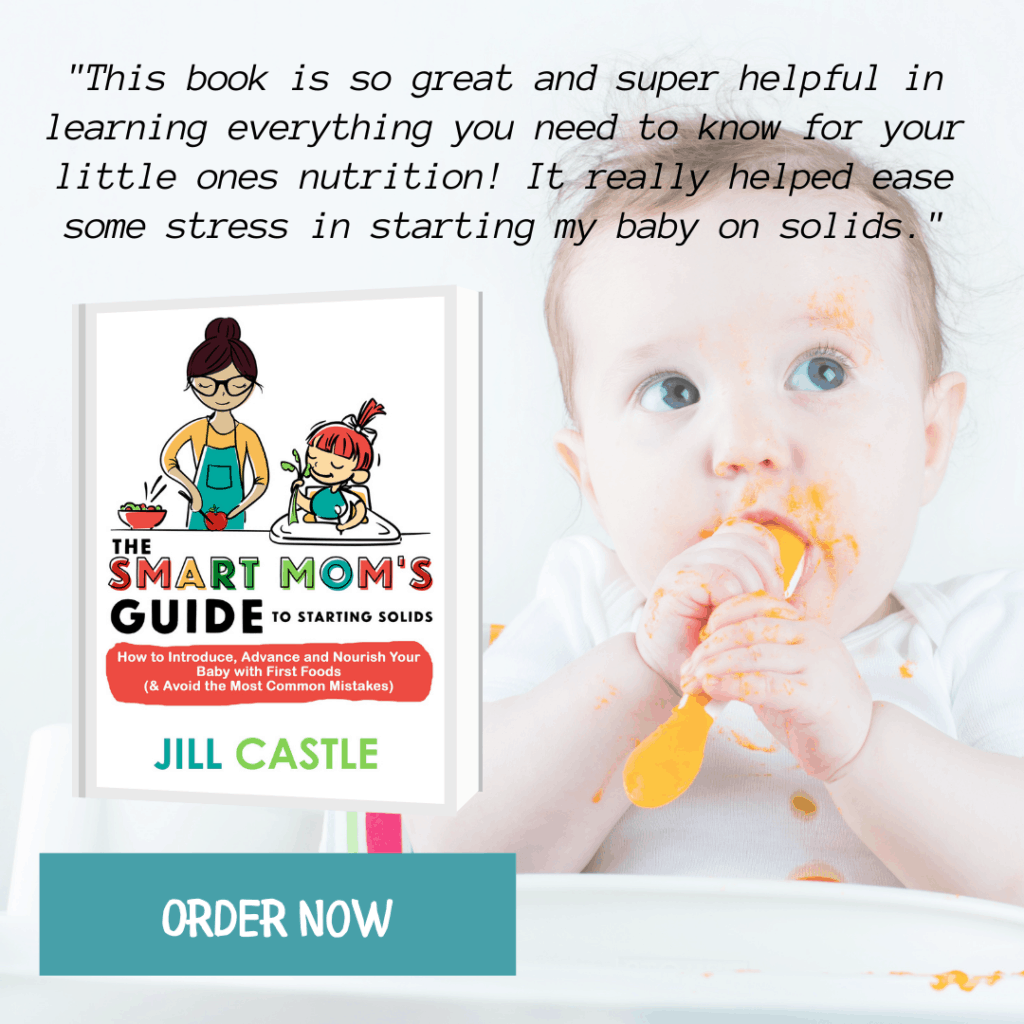
Need More Help with Handling Tasty Treats for Babies?
Check out my book, The Smart Mom’s Guide to Starting Solids. It’s my step-by-step guide to starting solids for new parents (and seasoned ones, too) and includes the latest information, from food choices and important nutrients for brain development to feeding methods, food allergies and more!
You’ll get guidance on foods to avoid for babies under 1 as well as the recommended foods to introduce to your new eater. Also, read, The Ultimate Guide to Baby’s Nutrition in the First Year.
Originally published in April, 2015 | Updated September 2022

Jill Castle, MS, RD
I like empowering parents to help their children and teens thrive at every size with realistic advice centered on healthful habits around food, feeding, nutrition and health behaviors. As a pediatric dietitian and author, my goal is to share strategies and realistic advice to help you raise a healthy and happy child through my articles and podcast.
